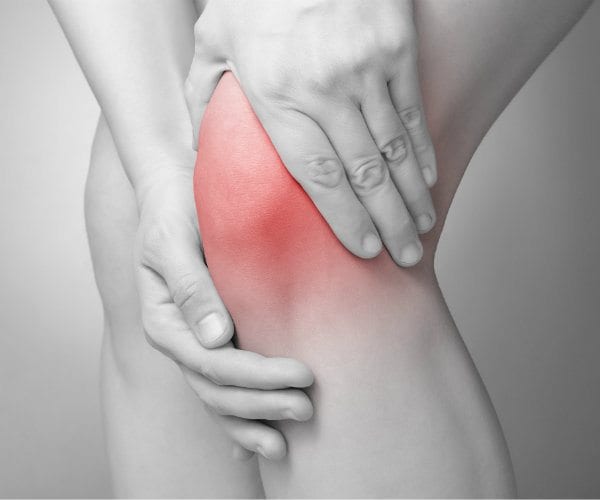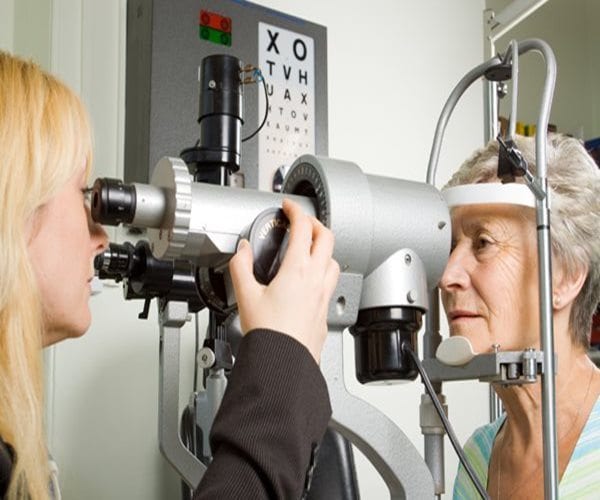Anti Aging
Back Clinic Anti Aging Chiropractic and Functional Medicine Team. Our body is in a constant and never-ending battle for survival. Cells are birthed, cells are destroyed. Scientists estimate that each cell must withstand over 10,000 individual assaults from reactive oxygen species (ROS) or free radicals. Without Fail, the body has an incredible system of self-healing that withstands the attack and rebuilds what has been damaged or destroyed. This is the beauty of our design.
To understand the biology of aging and translate scientific insight into interventions that improve late-life health through treatments. It is useful to have a clear, consensus view on what exactly constitutes anti-aging treatment.
Since before the days of Ponce de Leon’s search for longevity, man has always been enticed by the chance of eternal youth. Chiropractic care with its health movement is a powerful method of stabilizing and enhancing this self-healing ability. Dr. Alex Jimenez discusses concepts surrounding the anti-aging pandora.
.

by Dr Alex Jimenez | Anti Aging
“Keyhole” arthroscopic surgery should rarely be used to repair arthritic knee joints, a panel of international experts says in new clinical guidelines.
Clinical trials have shown that keyhole surgery doesn’t help people suffering from arthritis of the knees any more than mild painkillers, physical therapy or weight loss, said lead author Dr. Reed Siemieniuk. He is a health researcher with McMaster University in Toronto, Canada.
“You can make a pretty strong statement saying that from a long-term perspective, it really doesn’t help at all,” Siemieniuk said. “If they knew all the evidence, almost nobody would choose to have this surgery.”
Keyhole surgery is one of the most common surgical procedures in the world, with more than 2 million performed each year, Siemieniuk said. The United States alone spends about $3 billion a year on the procedure.
The new guidelines — published online May 10 in the BMJ — were issued as part of the journal’s initiative to provide up-to-date recommendations based on the latest evidence. The guidelines make a strong recommendation against arthroscopy for nearly all cases of degenerative knee disease.
This includes osteoarthritis as well as tears of the meniscus, the padding between the two leg bones in the knee, Siemieniuk said.
“With age and with use, the grinding of the two bones together can break down that padding,” he said. “It’s very common to see little rips and tears in that padding in patients with arthritis.”
Siemieniuk and his colleagues noted that a trial published in 2016 showed that surgery was no better than exercise therapy in patients with a meniscus tear.
Despite this and other medical evidence, most guidelines still recommend keyhole surgery for people with meniscus tears, sudden onset of symptoms like pain or swelling, or mild to moderate difficulties with knee movement.
Arthroscopic surgery relies on small incisions through which a tiny camera and miniature instruments are inserted. Doctors can remove or repair damaged tissue without having to cut the knee open.
The American Academy of Orthopaedic Surgeons currently advises against performing arthroscopic surgery in patients with full-fledged knee osteoarthritis, said Dr. Kevin Shea, an academy spokesman.
“Most orthopedic surgeons have dramatically reduced arthroscopic surgery in patients with degenerative arthritis,” Shea said. “Most I know have abandoned it over the last 10 to 15 years.”
However, arthroscopic surgery still can help people with joint movement problems caused by meniscus tears who have not developed moderate or severe knee osteoarthritis, said Shea.
Those patients should be treated first with mild painkillers and exercise therapy, but keyhole surgery should remain an option for them, he added. Shea is a professor of orthopedic surgery at the University of Connecticut.
“Not that long ago, I operated on a 67-year-old retired schoolteacher who’s an avid skier,” Shea said. “She had no arthritis in her knee but a huge meniscus tear that kept locking, catching and popping. Not offering treatment to her would not have been fair.”
Under the BMJ guidelines, patients with meniscus tears should be treated with painkillers and physical therapy, as well as weight loss if they are overweight, Siemieniuk said. Knee replacement surgery is the last treatment option, done once degeneration has progressed to the point where all other therapies don’t work.
There is a financial incentive for doctors and hospitals to perform unnecessary keyhole surgeries, but Siemieniuk said these surgeries also might be prompted by the desire to treat a painful medical condition.
“It’s hard to take away one of the options from people when chronic knee pain and arthritis can be very debilitating,” he said. “And there’s an expectation from patients that by the time they see a surgeon, the surgeon is going to have something to be able to offer them.”
Inertia might also play a role. “It’s a lot easier to introduce a new treatment into clinical care than to de-implement one that we later find out doesn’t work,” Siemieniuk said. “That’s what we’re seeing here.”
Keyhole surgery has its downsides. Recovery can last anywhere from 3 days to 6 weeks, Siemieniuk said, and there is a risk of blood clots or infection in the knee.
Patients should go through a shared decision-making process with their surgeon, questioning whether this surgery would truly help them, he said.
The surgery still can be useful to fix torn ligaments or repair damage caused by severe trauma, Siemieniuk said. But in most cases, he said, given the evidence, insurers “may choose not to fund it, which I think would be appropriate.”

by Dr Alex Jimenez | Anti Aging
Several studies have suggested that menopause may increase the risk of hearing loss, possibly due to lower estrogen levels, and that postmenopausal hormone replacement therapy might slow the decline. But researchers at Brigham and Women’s Hospital found that hormone therapy actually increased the risk of hearing loss.
Researchers examined links between menopausal status, oral hormone therapy, and risk of self-reported hearing loss in more than 80,000 women in the Nurses’ Health Study II.
During the 22-year study period, 23 percent of the participants developed hearing loss. Although no significant association was found between menopausal status and the risk, using postmenopausal hormone therapy was linked to a higher risk of hearing loss. The longer women used hormone therapy, the greater their risk.
“Our research focuses on identifying preventable contributors to hearing loss,” said lead author Dr. Sharon Curhan. “Although the role of sex hormones in hearing is complex and incompletely understood, these findings suggest that women who undergo natural menopause at an older age may have a higher risk. In addition, longer duration of postmenopausal hormone therapy use is associated with higher risk.
“These findings suggest that hearing health may be a consideration for women when evaluating the risks and benefits of hormone therapy,” she said.
The findings are published online May 10, 2017 in Menopause, The Journal of the North American Menopause Society.
An earlier study by Dr. Curhan of 65,000 women found that those who eat at least two servings of fish every week have a lower risk of age-related hearing loss.
Although hearing loss is often considered an inevitable part of aging, those who ate two or more servings a week had a 20 percent lower risk of hearing loss when compared to women who rarely ate fish. “Consumption of any type of fish tended to be associated with lower risk,” said Dr. Curhan. “These findings suggest that diet may be important in the prevention of acquired hearing loss.”
Approximately 48 million Americans suffer from hearing loss, and the number is expected to increase as the population ages.

by Dr Alex Jimenez | Anti Aging
Changes in your hair — whether it’s graying hair or hair loss — are a bane of aging.
But if new research in mice pans out in humans, you could one day cross worries about your mane off your list of concerns about getting older.
That’s because researchers accidentally pinpointed skin cells linked to gray hair and balding while they were conducting research on a specific type of cancer that affects nerve cells. The investigators believe their discovery could someday lead to new treatments to stop baldness and graying hair.
“Although this project was started in an effort to understand how certain kinds of tumors form, we ended up learning why hair turns gray and discovering the identity of the cell that directly gives rise to hair,” said study author Dr. Lu Le. He is an associate professor of dermatology at UT Southwestern Medical Center in Dallas.
“With this knowledge, we hope in the future to create a topical compound or to safely deliver the necessary gene to hair follicles to correct these cosmetic problems,” he explained in a university news release.
The researchers found that a protein called KROX20 turns on skin cells that develop into the hair shaft. These cells are usually linked to nerve development.
These skin cells then produce a protein involved in hair color. This protein is called stem cell factor (SCF). When SCF was deleted from mice, their hair turned white, according to the report.
When KROX20 cells were deleted, the mice became bald, the researchers said.
Studies done on animals don’t always turn out the same in humans, so it remains to be seen if these results will look as promising in people.
The study team does want to learn if SCF and KROX20 stop working properly over time in people. And, because gray hair and balding are often among the first signs of aging, this research could also provide information on aging in general, the authors noted.
The study was published online May 2 in the journal Genes & Development.

by Dr Alex Jimenez | Anti Aging
Could wine have a protective effect on the brain? A team of researchers at the Institute of Food Science Research in Madrid, Spain, have studied the process by which compounds in red wine have an anti-aging effect on the brain.
When consumed in moderation, notably as part of a Mediterranean diet, red wine, which contains polyphenol antioxidants, can be beneficial in delaying the onset of cognitive impairments in aging and neurodegenerative diseases like Parkinson’s and Alzheimer’s disease, researchers report.
Resveratrol — a substance found in red wine and chocolate — could help prevent age-related memory loss.
To investigate the molecular mechanisms behind the neuroprotective actions of wine, researchers in Spain studied certain compounds that are left behind after the wine has passed through the gut — wine-derived human gut metabolites. These are found in the urine and feces of people who drink wine on a regular and moderate basis.
To study the effects of these metabolites on the brain, the compounds were added to human cells under stress conditions, similar to the initial stages of certain neurodegenerative disorders.
According to the results, published in Frontiers in Nutrition, the wine metabolites protected the cells from dying due to the stress conditions.
The scientists explain that the exact composition of wine metabolites influences the neuroprotective effect. This composition, in turn, depends on the composition of each individual’s gut microbiota. In other words, wine is broken down into different metabolites depending on the gut flora of each individual.
“[This] underpins the idea that humans benefit from food in different ways,” explains Dr. Esteban-Fernández from the Institute of Food Science Research in Madrid. “This individual difference is a factor not to be neglected to understand the health effects of certain foods. We are now in need to advance our understanding of the effect of diet in the promotion of normal brain function.”
The study concludes that diet can be considered an important factor in health maintenance and disease prevention.
Antioxidant nutrients are mainly found in brightly colored fruit and vegetables such as carrots, apricots, sweet potato, bell peppers and green leafy vegetables (cabbage, spinach, peas, avocado, etc.)

by Dr Alex Jimenez | Anti Aging
Primary care optometrists and ophthalmologists may sometimes fail to detect age-related macular degeneration, the most common cause of vision impairment in the elderly, a recent U.S. study suggests.
Researchers examined data on a total of 1,288 eyes from 644 older adults who got what’s known as a dilated eye exam, when clinicians widen the pupils with eye drops to let in more light and get a better look at the retina in back of the eyeball.
Based on these exams, none of the participants were diagnosed with age-related macular degeneration by primary care optometrists and ophthalmologists. But when retina specialists took another look, they diagnosed the eye disorder in 25 percent of cases.
“To our knowledge, this is the first study to address the extent to which age-related macular degeneration (AMD) is under-diagnosed by primary eye providers in the U.S.,” said lead study author Dr. David Neely, a researcher at Callahan Eye Hospital and the University of Alabama at Birmingham.
“As treatments for the earliest stages of AMD are developed in the coming years, correct identification of AMD in primary eye care will be critical for routing patients to treatment as soon as possible so that the disease can be treated in its earliest phases and central vision loss avoided,” Neely said by email.
About 14 million Americans have age-related macular degeneration, and as the baby boomer population ages, the ranks of patients with this disorder are expected to swell, the researchers note in JAMA Ophthalmology.
It happens when a part of the retina called the macula gets thinner with age. Over time, people with the condition can lose what’s known as central vision, or the ability to see things in detail when facing them head on. They can become unable to read books or see the road well enough to drive a car, but they may retain some peripheral vision.
There’s no cure, but there are some medications and laser procedures on the eye that can sometimes slow the progression of the disease and help avoid extensive vision loss. Eating plenty of leafy greens and avoiding cigarettes may help prevent the condition from developing.
Patients in the current study were 69 years old on average. They were seen by one of 31 primary eye care providers in Birmingham, Alabama, between 2009 and 2011.
They were more likely to have undiagnosed age-related macular degeneration if they were older, male or had less than a high school education.
One limitation of the study is that results from practices in one region might not necessarily reflect how accurately age-related macular degeneration would be diagnosed elsewhere, the authors note.
There’s also wide variation in severity with this condition, said Dr. David Parke II, chief executive officer of the American Academy of Ophthalmology.
“It’s a little like a person saying `I have high blood pressure,’” Parke, who wasn’t involved in the study, said by email. “It can be just borderline high and difficult to detect or it can be dangerously high leading to a high risk of stroke or heart attack.”
It’s not surprising that good quality, high magnification images of the macula interpreted by a trained ophthalmologist retina specialist catch more subtle changes in the eye, Parke added. But it’s also more expensive than traditional dilated eye exams done by primary eye care providers and won’t necessarily catch many additional cases of AMD in people who don’t have symptoms, he said.
As the condition worsens, some previous research suggests that nutritional supplements with ingredients including zinc, copper, and vitamins C and E may help minimize vision loss.
“For many patients with more severe AMD the use of nutritional supplements can reduce the subsequent rate of worsening of AMD and vision loss,” said Dr. Paul Lee, director of the W.K. Kellogg Eye Center at the University of Michigan in Ann Arbor.
“One piece of good news is that AMD is generally something that progresses over years, so that if detected on the next visit, there is still the opportunity to have the therapy started then,” Lee, who wasn’t involved in the study, said by email.

by Dr Alex Jimenez | Anti Aging
Medical researchers have discovered a naturally occurring compound the human body produces that can speed DNA repair, combat disease, and may turn back the clock on aging.
The compound — called NAD+, which is present in all cells — plays a key role in regulating protein interactions that control DNA repair.
An international group of scientists predicts the team’s discovery of NAD+ will lead to a new drug to reverse aging, speed DNA repair, and even keep astronauts healthy on long space flights.
A leading member of research team — geneticist Dr. David Sinclair, whose team is based at Harvard Medical School and the University of New South Wales in Sydney, Australia — said the first human trials of a therapy based on the compound will begin within six months.
Twenty-five volunteers will be injected with a substance to verify its health and longevity benefits. If the trial turns out successfully, larger scale human trials will be conducted in the United States, Australia, and possibly other countries.
“Then we really get serious,” Sinclair tells Newsmax Health.
NAD+ is what’s known as a metabolite — a substance naturally found in our bodies which are vital for metabolism. It is present in all cells and plays a key role as a regulator in protein-to-protein interactions controlling DNA repair.
Sinclair’s laboratory research involved using NMN — a NAD+ precursor or “booster” — which the team has shown is successful in improving cells’ ability to repair DNA damage caused by radiation exposure (including sunlight) and old age.
The team’s lab work found that mice, injected with NMN, appeared more youthful — at the cellular level — in a variety of standard biological tests.
“The cells of the old mice were indistinguishable from the young mice after just one week of treatment,” Sinclair says.
“This is the closest we’ve come to a safe and effective anti-aging drug that’s perhaps only three to five years away from being on the market, if the [human] trials go well.”
The research project has come to the attention of the National Aeronautics and Space Administration (NASA), which has asked to be kept fully briefed on progress because of the possibility of using the substance to keep its astronauts healthy during long space missions, which can speed up aging processes.
Another group that stands to benefit: Survivors of childhood cancers.
According to Dr. Lindsay Wu, a University of New South Wales-based member of the research team, 96 percent of childhood cancer survivors suffer a chronic disease by age 45.
These include cardiovascular diseases, Type 2 diabetes, Alzheimer’s disease, and various cancers unrelated to their childhood cancers.
“All of this adds up to the fact they have accelerated aging — which is devastating,” Wu says. “It would be great to do something about that — and we believe we can with this molecule.”
For the past four years, Sinclair, Wu, and others on the research team have been working with biomedical companies with the aim of making NMN into a drug substance that can be used on patients. It will act by boosting the effectiveness of the body’s own NAD+.
The research was reported in a recent issue of the journal Science.
As well as delaying the onset of visible signs of aging, Sinclair believes the compound could have a great “impact on health and longevity.”
“We took mice that were 20 months old, which is equivalent to a 60- [to] 70 year-old human and we gave them NMN and we found that . . . many aspects of aging were reversed,” Sinclair notes.
“Their DNA repair activities went up to youthful levels and they were more resistant to radiation and should therefore be more protected against cancer and aging itself.”

by Dr Alex Jimenez | Anti Aging
Researchers say they’ve found an enzyme in mice associated with obesity and a loss of exercise capacity in midlife, suggesting that the discovery could eventually lead to new weight-loss medications.
The team at the U.S. National Heart, Lung, and Blood Institute (NHLBI) gave one group of mice a drug that inhibits the activity of the enzyme called DNA-PK. Another group of mice wasn’t given the drug. Both groups were fed a high-fat diet.
The group that received the inhibitor had 40 percent less weight gain than the other group, according to the study in the journal Cell Metabolism.
The findings challenge current ideas about why people gain weight as they age, the researchers said.
“Our society attributes the weight gain and lack of exercise at midlife [approximately 30-60 years] primarily to poor lifestyle choices and lack of willpower,” said study lead author Dr. Jay Chung, head of the institute’s Laboratory of Obesity and Aging Research.
The researchers said the average weight gain between age 20 and 50 is about 30 pounds, even though the amount of food a person consumes generally decreases during this time.
Chung and his colleagues looked for biochemical changes in animals during midlife and found that DNA-PK increases in activity with age. Also, the researchers said the enzyme helps the conversion of nutrients to fat.
“This study shows that there is a genetic program driven by an overactive enzyme that promotes weight gain and loss of exercise capacity at midlife,” Chung said in a NHLBI news release.
“Our studies indicate that DNA-PK is one of the drivers of the metabolic and fitness decline that occurs during aging, which makes staying lean and physically fit difficult and increases susceptibility to metabolic diseases like diabetes. The identification of this new mechanism is very important for improving public health,” he said.
Obesity is linked with a number of chronic diseases, including type 2 diabetes and heart disease.
“The study opens the door to the development of a new type of weight-loss medication that could work by inhibiting DNA-PK activity,” Chung said.
However, it’s important to note that research that seems promising in animals doesn’t always translate well to humans.
For now, middle-aged people fighting obesity need to focus on calorie reduction and increased exercise, the researchers recommended.





